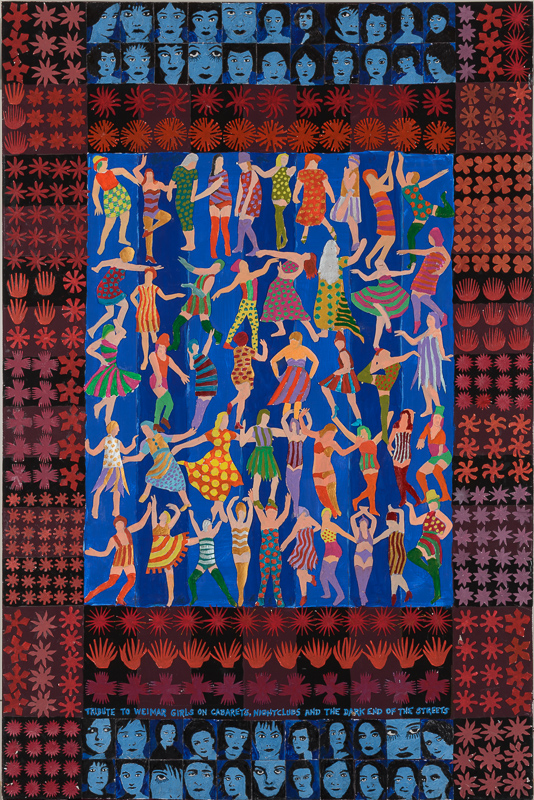.
Hyldest til Weimarrepublikkens kvinder • Tribute to the women of the Weimar Republic • Hommage an die Frauen der Weimarer Republik

Akryl, blyant, slettelak. Papir, karton.
Weimarrepublikken er Tysklands uofficielle navn fra 1. verdenskrigs afslutning og til den nazistiske magtovertagelse i 1933, hvor Hitler blev udråbt som Rigskansler. Det var en periode med stor fattigdom, inflation, politisk ekstremisme og utilfredshed med fredsaftalen fra 1. verdenskrig. Det var mærkværdigvis også en periode med en høj kunstnerisk standard og aktivitet, bl.a. inden for billedkunst og arkitektur (bl.a. Bauhaus-skolen).
Kvindernes situation var forfærdelig bl.a. med en omfattende prostitution som følge af fattigdommen. Perioden er bl.a. beskrevet i fjersynsserien Babylon Berlin og musicalen/filmen Cabaret. Kvindeportrætterne på billedet er hovedsagelig portrætter fra Weimarperioden, som er fundet på internettet.
Acrylic, pencil, correction fluid. Paper, carton.
The Weimar Republic was Germany’s unofficial name from the end of World War I until the Nazi takeover in 1933, when Hitler was proclaimed Chancellor. It was a period of great poverty, inflation, political extremism and dissatisfaction with the World War I peace agreement. It was strangely also a period of high artistic standard and activity, e.g. in the field of visual arts and architecture (the Bauhaus School). The situation of women was terrible, among other things with widespread prostitution as a result of poverty. The period is described in the television series Babylon Berlin and the musical Cabaret. The female portraits in the picture are mainly portraits of women from the Weimar period, all found on the Internet.
Acryl, Bleistift, Korrekturflüssigkeit. Papier, Karton.